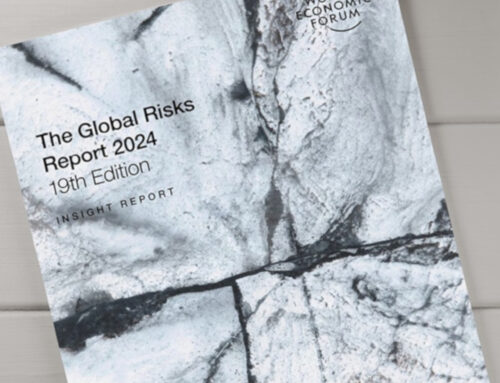

Celebrate Farmers and Protecting Crop Insurance This Ag Week
Share this
Every day our nation depends on our farmers and ranchers to provide a safe, affordable and abundant food supply in good times and in bad. That is especially true during these challenging times in the wake of the COVID-19 outbreak. Thankfully, that faith is well-placed.
Despite gaps on shelves at your local grocer, retailers around the world continue to remind customers there is not a shortage of food and supplies, but rather a surge in demand. Our country’s food production remains abundant thanks, in part, to the risk management tools farmers depend on in case of bad weather, low prices and uncertainty.
March 22 – 28, also known as National Ag Week, is a time we seek to recognize and celebrate the plethora provided by agriculture as well as celebrate those who provide the meals on our plates. With over 290 million acres protected, crop insurance is a sound investment and risk management tool that helps ensure the production of a stable food, fiber, feed and fuel supply.
Crop insurance shares risk among taxpayers, farmers and the private sector delivery system. Crop insurance is first purchased by farmers, and farmers must prove that they have met a deductible (minimum loss threshold) to be eligible for a payment for a portion of their loss. Farmers spend between $3.5 billion and $4 billion on average per year to purchase crop insurance, and they bear a significant portion of losses through deductibles.
Not only does the crop insurance program serve farmers’ best interests, but it is a proven successful program for agricultural lenders and bankers, which benefits the ag economy as a whole. Crop insurance policies provide critical collateral to banks and credit organizations that assist farmers through operating loans, especially during a time of low commodity prices.
At a recent hearing on the U.S. President’s budget proposal, Secretary of Agriculture Sonny Perdue said, “The crop insurance program is the best risk management safety net program.” As the program has grown to be the most important risk management tool for farmers, however, it has also become a larger target for critics of farm policy. The President’s fiscal year 2021 budget proposal, released in February, would make significant cuts to the program even though the federal government only spends less than a quarter of 1% of its budget on the farm safety net (including crop insurance and other programs). During these uncertain times, one would think this would be a worthwhile investment to protect the world’s most affordable and safe food and fiber supply.
-Kerry Lynch
Kerry is the Director of Public Affairs for the Crop Insurance and Reinsurance Bureau. She also leads CIRB’s Emerging Leaders Program.
The Crop Insurance and Reinsurance Bureau leads a broad and diverse coalition of farm, lending, ag input, conservation, dairy, and crop insurance and reinsurance organizations that work together to protect the program. The Crop Insurance Coalition has a record of successfully defending against attacks by speaking with one voice and presenting a united front to preserve and protect the program.
For more information about CIRB please visit, www.cropinsurance.org
By: Kerry Lynch
Director of Public Affairs for the Crop Insurance and Reinsurance Bureau
Head of CIRB’s Emerging Leaders Program

Celebrate Farmers and Protecting Crop Insurance This Ag Week
Share this
Every day our nation depends on our farmers and ranchers to provide a safe, affordable and abundant food supply in good times and in bad. That is especially true during these challenging times in the wake of the COVID-19 outbreak. Thankfully, that faith is well-placed.
Despite gaps on shelves at your local grocer, retailers around the world continue to remind customers there is not a shortage of food and supplies, but rather a surge in demand. Our country’s food production remains abundant thanks, in part, to the risk management tools farmers depend on in case of bad weather, low prices and uncertainty.
March 22 – 28, also known as National Ag Week, is a time we seek to recognize and celebrate the plethora provided by agriculture as well as celebrate those who provide the meals on our plates. With over 290 million acres protected, crop insurance is a sound investment and risk management tool that helps ensure the production of a stable food, fiber, feed and fuel supply.
Crop insurance shares risk among taxpayers, farmers and the private sector delivery system. Crop insurance is first purchased by farmers, and farmers must prove that they have met a deductible (minimum loss threshold) to be eligible for a payment for a portion of their loss. Farmers spend between $3.5 billion and $4 billion on average per year to purchase crop insurance, and they bear a significant portion of losses through deductibles.
Not only does the crop insurance program serve farmers’ best interests, but it is a proven successful program for agricultural lenders and bankers, which benefits the ag economy as a whole. Crop insurance policies provide critical collateral to banks and credit organizations that assist farmers through operating loans, especially during a time of low commodity prices.
At a recent hearing on the U.S. President’s budget proposal, Secretary of Agriculture Sonny Perdue said, “The crop insurance program is the best risk management safety net program.” As the program has grown to be the most important risk management tool for farmers, however, it has also become a larger target for critics of farm policy. The President’s fiscal year 2021 budget proposal, released in February, would make significant cuts to the program even though the federal government only spends less than a quarter of 1% of its budget on the farm safety net (including crop insurance and other programs). During these uncertain times, one would think this would be a worthwhile investment to protect the world’s most affordable and safe food and fiber supply.
-Kerry Lynch
Kerry is the Director of Public Affairs for the Crop Insurance and Reinsurance Bureau. She also leads CIRB’s Emerging Leaders Program.
The Crop Insurance and Reinsurance Bureau leads a broad and diverse coalition of farm, lending, ag input, conservation, dairy, and crop insurance and reinsurance organizations that work together to protect the program. The Crop Insurance Coalition has a record of successfully defending against attacks by speaking with one voice and presenting a united front to preserve and protect the program.
For more information about CIRB please visit, www.cropinsurance.org
By: Kerry Lynch
Director of Public Affairs for the Crop Insurance and Reinsurance Bureau
Head of CIRB’s Emerging Leaders Program




